Bar Magnet and Compass Interactive
The black rectangle represents a bar magnet.
The magnet's North and South
poles are labeled. The other item represents a compass; the red end
of the needle is the end that would point towards Earth's North Magnetic Pole. Notice that the red end of the compass needle points toward the south pole of the magnet. For historical reasons, what we call "Earth's North Magnetic Pole" is actually the south pole of Earth's magnetic field! Yikes!
Drag either the compass or the magnet around to explore the magnetic
field around the bar
magnet. Can you determine the shape of
the magnetic field?
(Note: If you cannot see the animation below, or it is not working properly,
you may need to download the latest Flash
player.)
This is an early draft version of this activity. We expect to replace it with
a better version soon. Some things to be aware of:
- If you drag either the compass or the magnet off screen and let go, you
won't have any way to get them back. Reload/refresh the web page to start
over.
- The behavior of the compass might be a bit different in the real world
when you place it on top of the magnet.
You might also be interested in:
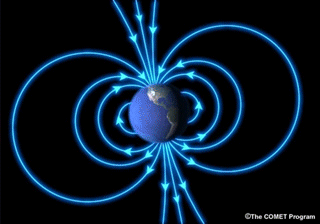
Earth has a magnetic field. If you imagine a gigantic bar magnet inside of Earth, you'll have a pretty good idea what Earth's magnetic field is shaped like. Of course, Earth DOESN'T have a giant bar magnet
...more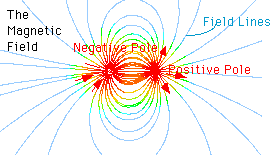
The force of magnetism causes material to point along the direction the magnetic force points. This property implies that the force of magnetism has a direction. As shown in the diagram to the left, the
...more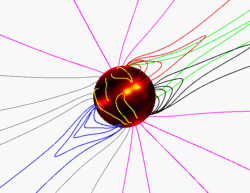
The Sun has a very large and very complex magnetic field. The magnetic field at an average place on the Sun is around 1 Gauss, about twice as strong as the average field on the surface of Earth (around
...more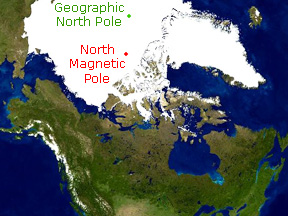
Earth has a global magnetic field that is approximately, though not exactly, a dipole field (like a bar magnet) with a north pole and a south pole. Earth's North Magnetic Pole (NMP) is not in the same
...more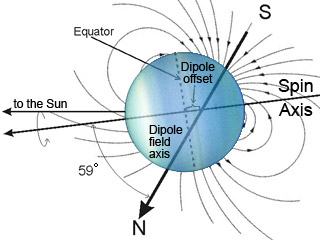
The planet Uranus has an odd magnetic field. The planet's magnetic poles are nowhere near the geographic poles (as defined by the spin axis) of Uranus. A portion of the magnetic field of Uranus is a dipole
...more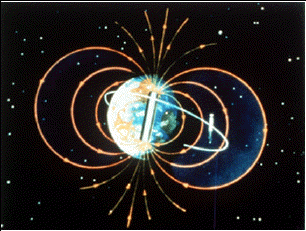
The Earth is a good example of a planetary dipole, where the lines of force point in a direction out of the South (magnetic) Pole and into the North (magnetic) Pole. Planets can also show evidence of quadrupoles
...more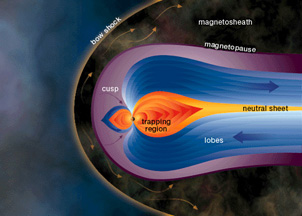
A magnetometer is an instrument for measuring magnetic fields. Many spacecraft carry magnetometers to measure the magnetic fields around planets they orbit or fly by. When a spacecraft takes such measurements,
...more














